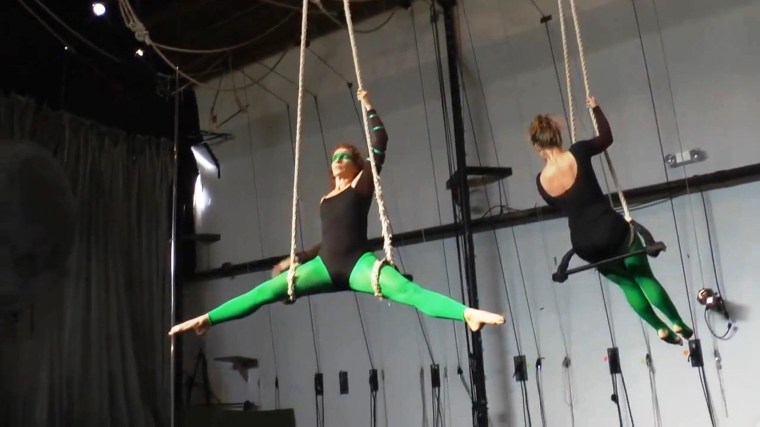What do tornadoes, trees and trapeze artists have in common? University of Georgia biologist Uma Nagendra wove those elements together to come up with the winning entry in the seventh annual "Dance Your Ph.D." contest, one of the science world's weirdest and most wonderful competitions.
The contest — overseen by John Bohannon, a contributing correspondent at the journal Science — recognizes researchers who turn their Ph.D. thesis topics into interpretive dance. Sponsors include Science and its publisher, the American Association for the Advancement of Science, as well as HighWire Press. The winners are chosen by an expert panel of scientists and artists.
Nagendra won the overall prize as well as top honors in the biology category for her interpretation of a study showing how tornadoes churn up forest soil and give tree seedlings an edge over the parasitic fungi that can otherwise do them in. To illustrate her point, she choreographed a trapeze routine with dancers portraying a tree, seedlings and pathogens from the tree's roots.
Is it strange for a Ph.D. biology student to be a trapeze artist as well? Not as strange as you might think. "It turns out there are a lot of scientists doing it," Bohannon quotes her as saying in Monday's item announcing the winners.
The winner of the chemistry category, Saioa Alvarez of the University of the Basque Country in Spain, not only choreographed his dance: He wrote the song to go with it, and dressed up in a sumo fat suit to dramatize his research into the stability of reduced-fat mayonnaise (or lack thereof):
The physics winner, MIT's Hans Rinderknecht, created a dance titled "In the Ring: A Fusion Odyssey" to serve as a dance-floor demonstration of his Ph.D. thesis, "Studies of Non-Hydrodynamic Processes in Inertial Confinement Fusion Implosions on OMEGA and the National Ignition Facility":
David Manzano Cosano of the Complutense University of Madrid took the prize in the social science category for a dance that dramatized the history of technology and colonialism in the Pacific. Who knew the battle for supremacy in the Pacific looked so much like a mosh-pit scrum?
Online voters picked a "People's Choice" winner as well: Venanzio Cichella of the University of Illinois at Urbana-Champaign wowed the audience with a tango that demonstrated how flying robots can coordinate their trajectories and avoid running into each other. "An autonomous flying robot who can safely navigate a crowded dynamic environment, and coordinate with its teammates, can definitely tango!" Cichella writes.
Each of the category winners will receive a $500 prize, and Nagendra is getting $1,000 as well as a free trip to an event at Stanford University next May during which her video will be screened. For even more Ph.D. dances, check out Bohannon's video gallery featuring the contest's 12 finalists.
